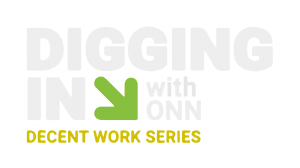
Blog
What the new report on Grants Ontario means for nonprofits – Archived Content
December 12, 2019
As part of its annual report, the Office of the Auditor General (OAG) of Ontario has released a chapter entitled, “Oversight of Time-Limited Discretionary Grants: 2019 Value-for-Money Audit” (summary). Much of the chapter focuses on the Grants Ontario portal (now Transfer Payment Ontario, or TPON), which ONN and our network have long been interested in seeing expanded and improved. The chapter notes that the Ontario government made it mandatory in 2016 for all one-time grant programs (transfer payment agreements, or TPAs), whether for nonprofits, municipalities, First Nations, or for-profit businesses, to be administered through the portal. As the OAG report notes, these one-time programs total $3.9 billion across government (approximately 2.8 per cent of the provincial budget).
The purpose of making the portal mandatory was “to create administrative efficiencies and to share recipient information across government for better decision-making.”
The Auditor General’s report notes that there is still a long way to go in the process of migrating these programs onto the portal and taking advantage of its full functionality. Key findings include:
- There is no central list cataloging all the grants available and their details.
- Some ministries are not using the mandatory system. Only 53 per cent of one-time grant streams are using it, with the remaining 47 percent still running their own grant management systems, costing the government $45 million.
- Most ministries are not using all key system components of the portal.
- User satisfaction was low, with 51 percent of external users in 2018 finding the system difficult to navigate.
- Because the Grants Ontario System has not been widely adopted, expected efficiencies and benefits of the system have not been realized.
- Performance measures established for grant programs were not sufficient to assess whether grant programs were meeting their objectives.
One OAG finding raised eyebrows at ONN – that “most grant programs do not consider an applicant’s need for funding during the selection process.” This reflects old-school charity-model thinking instead of a contemporary understanding of nonprofits as partners to government in creating positive social, economic, and environmental impacts. After all, does the government consider “need” when it gives money to police services for programs to reduce impaired driving or to fund research to develop a dynamic agri-food sector? The report also highlights the importance of building evaluation capacity in the nonprofit sector so that the longer-term impacts of programs can be better measured.
It is helpful to shine a spotlight on the extent to which the Ontario government’s TPA management systems are modern, coordinated, efficient, and supportive of an outcome-focused relationship with the nonprofit sector and other TPA partners. ONN has been working to help improve the TPON portal for several years with what was formerly the Grants Ontario Business Office, now the Transfer Payment Ontario Business Support Team. We held a focus group in 2016 to provide nonprofits’ input into how the portal was working from a user perspective and then began co-convening a Grants Ontario reference group with the Business Office regularly, starting in early 2018. Through this process, our network has brought important “pain points” to light, such as the frequency with which program officers in government asked for information from nonprofits that had already been provided through the TPON portal, or times (usually around grant application deadlines!) when the portal cannot handle the web traffic.
The reference group’s feedback, along with results from a user survey conducted by the Business Office, has resulted in meaningful improvements to the portal, most notably following an upgrade of the user interface in summer 2019 (including the introduction of the “GOBot” chat function). There is, of course, more work to be done on this front so we will continue to convene our reference group with the Business Support Team.
But much of the work has to happen on the Ontario Government side if we are to achieve the goal of reducing the administrative burden for both government and nonprofits. Moving more ministries and programs onto the TPON portal will be an important precondition for streamlining transfer payment agreements under the recently-announced TP Consolidation initiative. And that will support the goal that our sector shares with government: spending less time on paperwork and more time on delivering the vital programs and services that matter to the people of Ontario.


